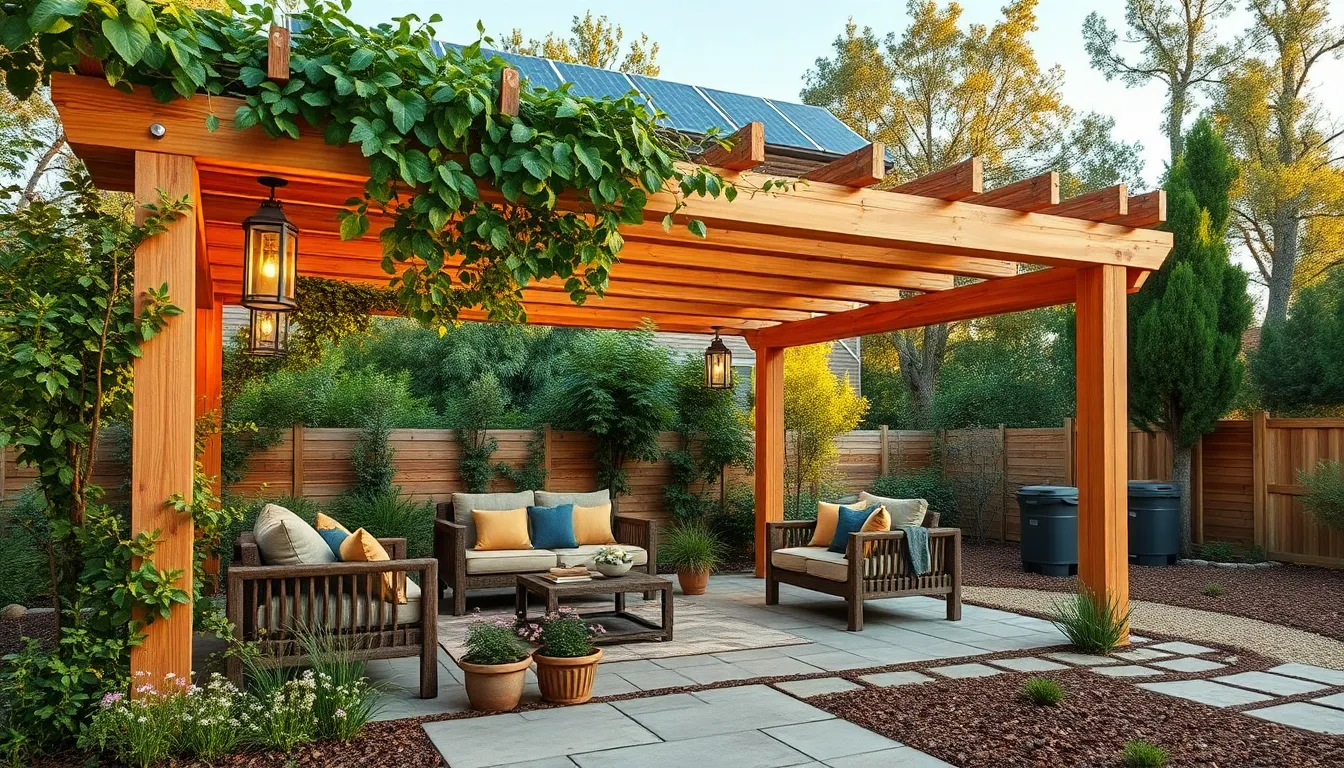Whether you’re just starting your outdoor living journey or you’ve been crafting your yard for years, creating a sustainable shelter is a rewarding way to enhance your space while honoring the planet. This guide offers 10 eco-friendly ideas that blend beauty, function, and green living—perfect for anyone eager to build a backyard retreat that feels both inviting and responsible.
Transforming your yard into a sustainable oasis doesn’t have to be complicated or costly. From natural materials to clever designs, these outdoor shelters bring shade, comfort, and charm without compromising your environmental values. Get ready to discover practical solutions that will inspire confidence and make your outdoor living dreams a vibrant reality!
Use Reclaimed Wood for Framework
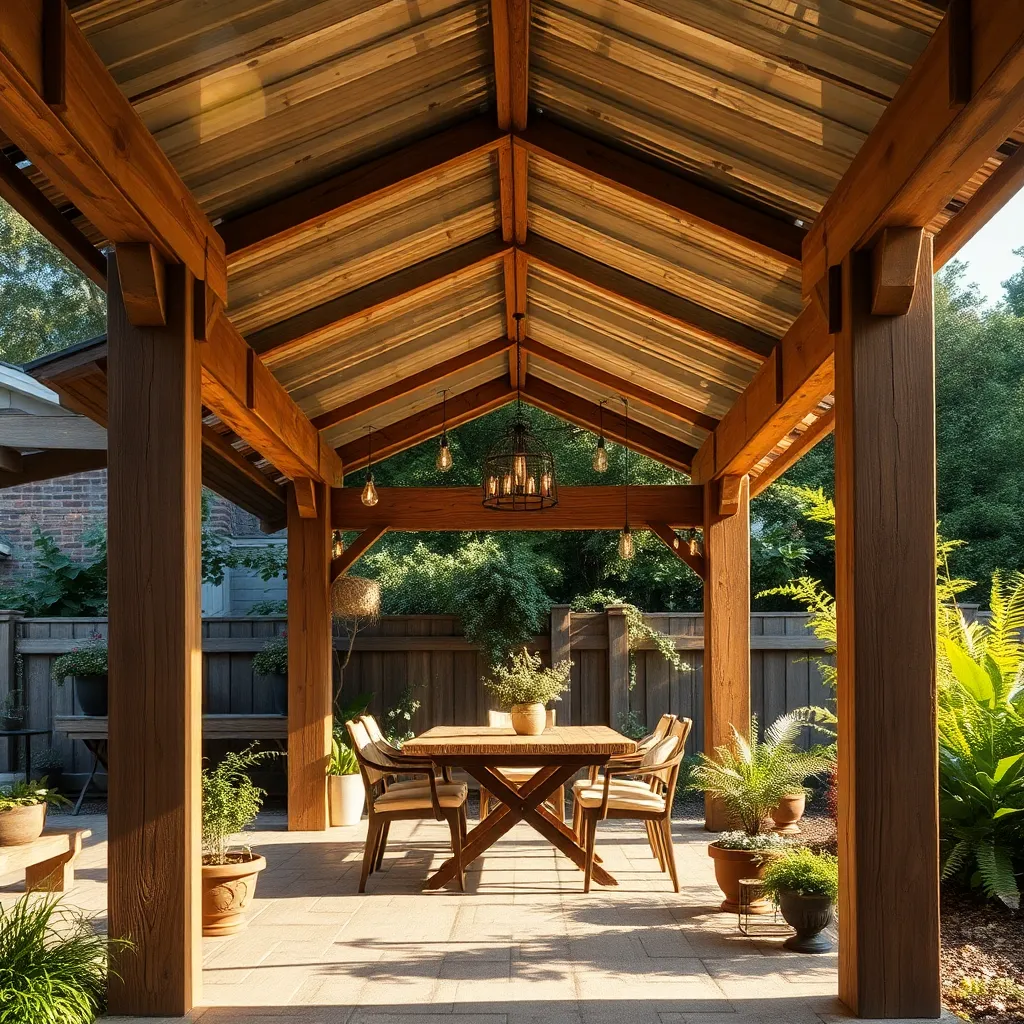
Using reclaimed wood for the framework of your outdoor shelter is a sustainable choice that adds character and reduces waste. Start by sourcing sturdy, untreated wood from old barns, pallets, or construction sites, ensuring the lumber is free of rot and pests. For structural integrity, select beams that are at least 2×4 inches thick, and consider reinforcing joints with galvanized steel brackets for durability.
To make assembly easier, pre-cut and label your reclaimed wood pieces according to your shelter design, such as a simple pergola or lean-to style. For advanced stability, incorporate diagonal bracing and use weather-resistant finishes like natural oils or eco-friendly sealants to protect the wood outdoors. This approach not only maximizes the lifespan of your shelter but also showcases the beauty of reclaimed materials in your eco-friendly yard.
Incorporate Living Green Walls
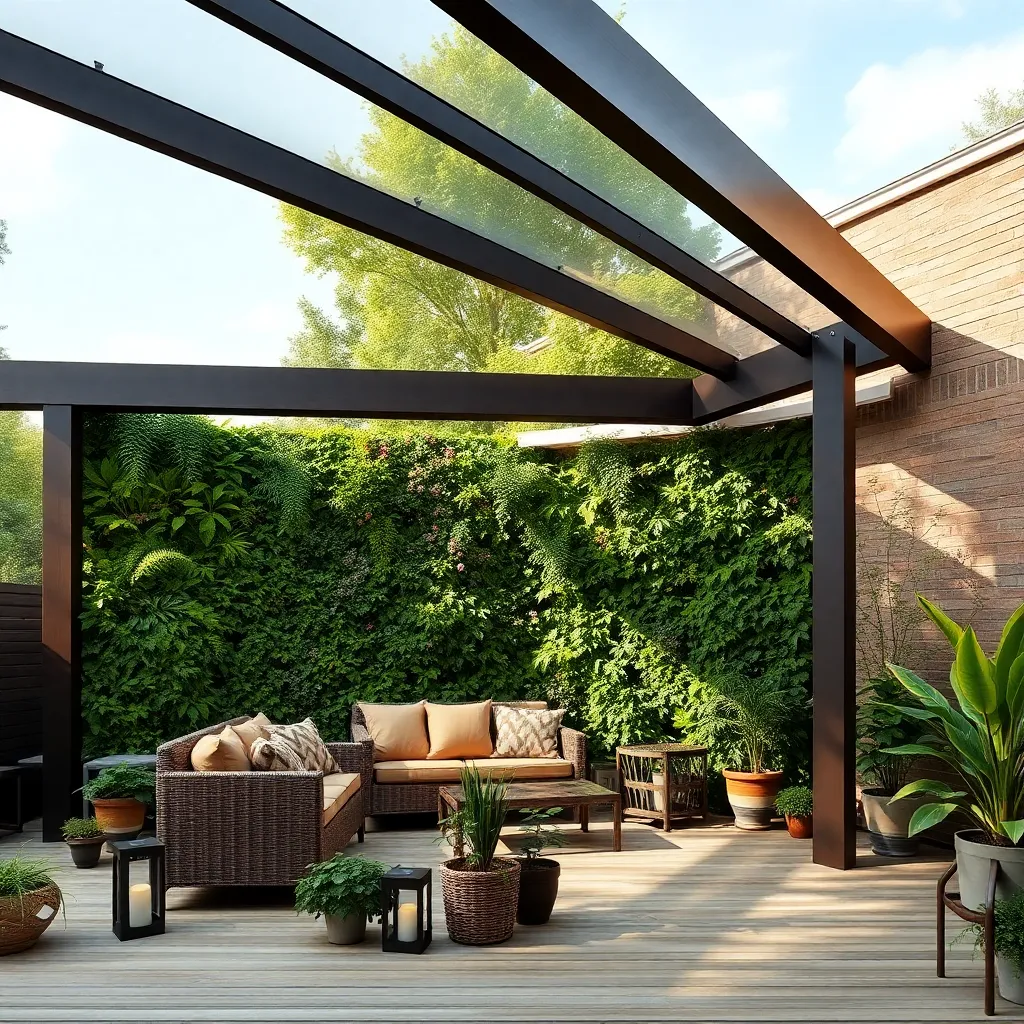
Living green walls are an excellent way to add natural insulation and beauty to your outdoor shelter. Start by selecting modular planting panels made from recycled plastic or metal frames that can be securely attached to your shelter’s exterior walls. For best results, use lightweight, drought-tolerant plants like succulents, ferns, or herbs, and ensure the wall includes an integrated drip irrigation system to maintain consistent moisture with minimal water waste.
For those ready to elevate their design, consider building a vertical garden with a layered soil system and automated watering to support a wider variety of plants. Incorporate lightweight, breathable fabrics or mesh backing to protect the structure and allow roots to breathe, which prevents moisture damage. This approach not only enhances your shelter’s energy efficiency but also creates a vibrant, living focal point that encourages biodiversity in your yard.
Install Solar-Powered Lighting
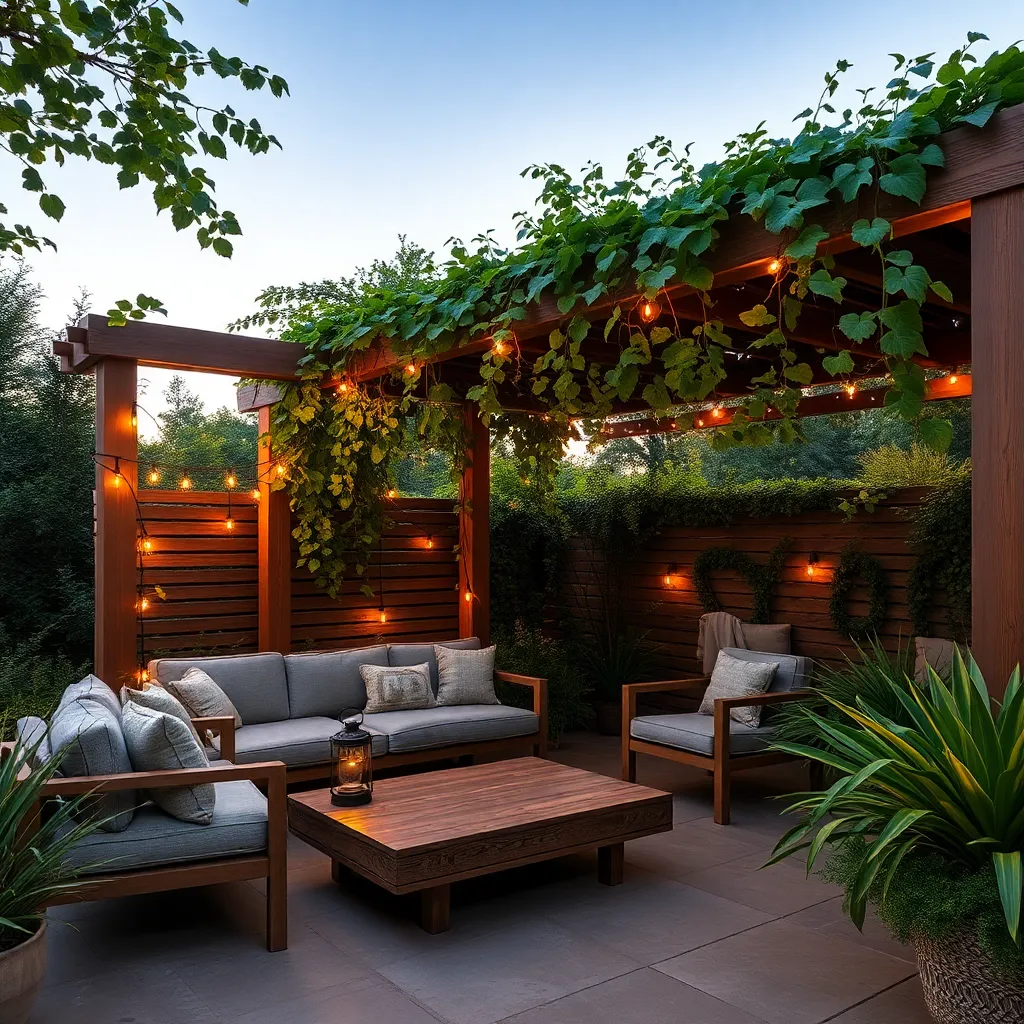
Harnessing solar-powered lighting is an excellent way to brighten your outdoor shelter sustainably. Start by selecting solar LED string lights or spotlights with high-efficiency panels that require minimal direct sunlight to charge. Position solar panels on rooftops or nearby open areas with at least 6 hours of sun exposure daily, and use weather-resistant fixtures designed for outdoor use, ensuring durability and consistent performance.
For a polished look, integrate lighting into the shelter’s structure with recessed or mounted options along beams and posts, enhancing ambiance without clutter. Advanced gardeners can install motion sensors or timers to optimize energy use and add convenience. Remember to regularly clean solar panels and check battery health to maintain brightness and extend the system’s lifespan effectively.
Build with Bamboo Materials
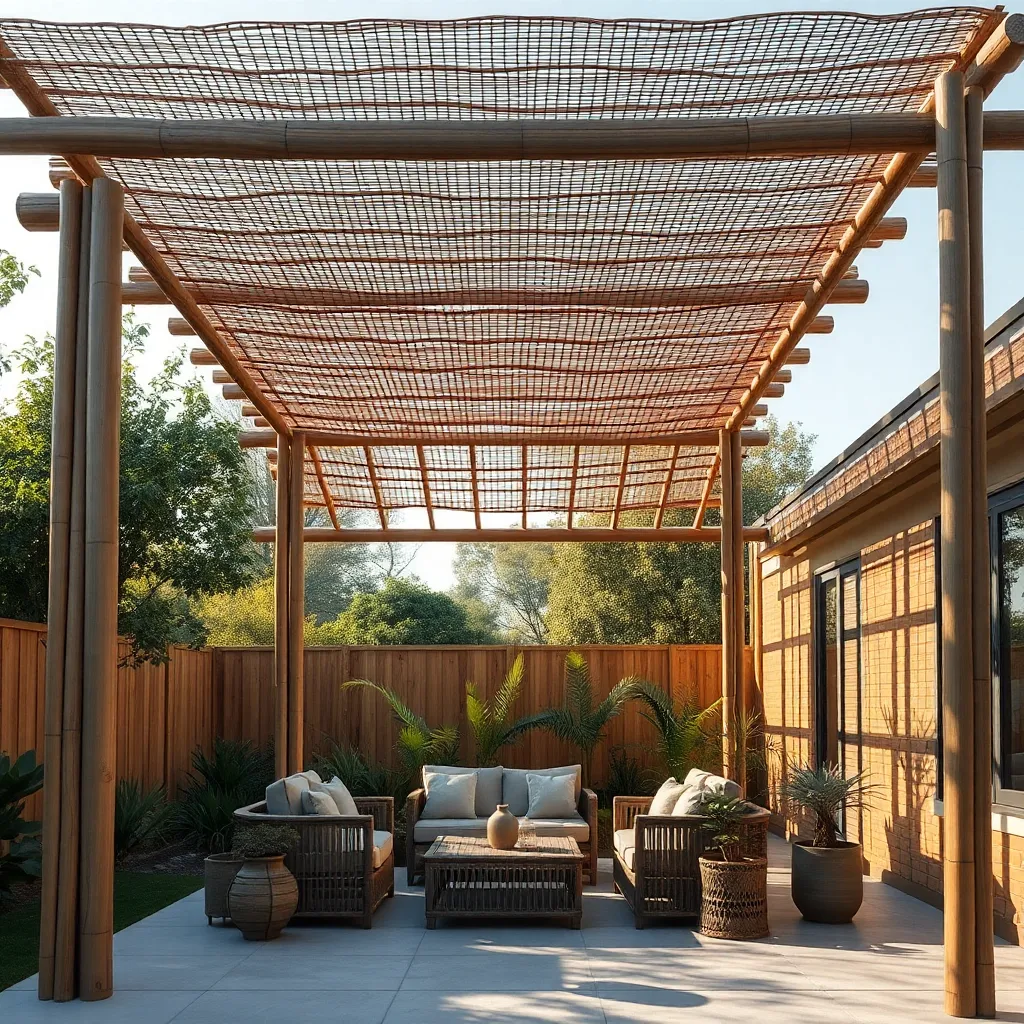
Bamboo is an excellent choice for building outdoor shelters due to its remarkable strength and rapid renewability. When constructing with bamboo, select poles that are at least 2 inches in diameter and around 6 to 8 feet long for structural stability, and treat them with a natural preservative like borax to prevent pests and decay. Incorporate cross-bracing techniques by lashing with biodegradable rope or using stainless steel fasteners to enhance durability and flexibility in your shelter design.
For a visually appealing and functional bamboo shelter, consider integrating slatted bamboo roofing panels that allow filtered sunlight while providing shade. Advanced builders can combine bamboo with other sustainable materials like reclaimed wood or natural fiber thatching to create a unique, weather-resistant structure. Remember to ensure a solid, level foundation using stone or compacted earth to keep your bamboo shelter stable through changing seasons.
Design Rainwater Harvesting Roofs
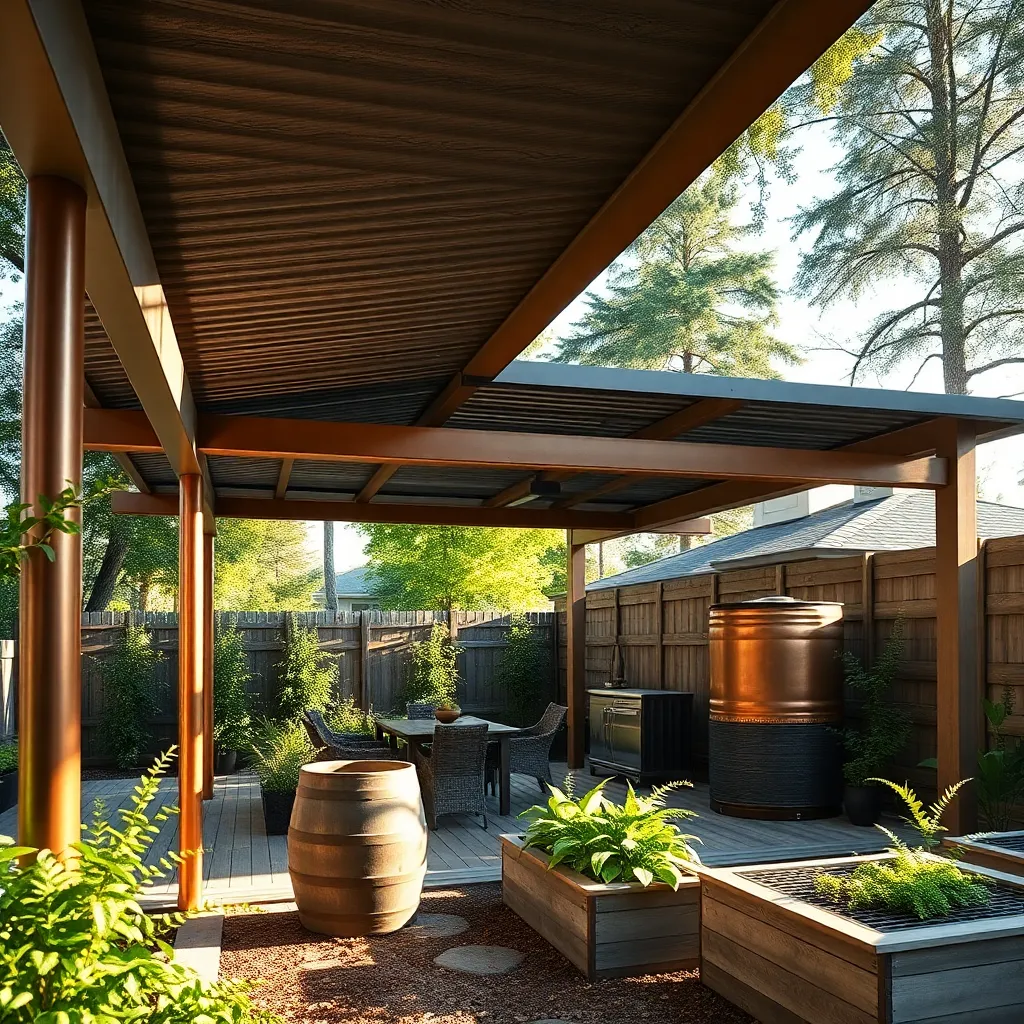
Incorporate a sloped roof design with durable, non-toxic materials like metal or recycled polycarbonate panels to effectively channel rainwater into storage tanks. Ensure the roof pitch is at least 15 degrees for optimal water runoff and install a leaf guard on gutters to prevent debris clogging. Using food-grade gutters and downspouts will keep your collected water safe for garden use.
To maximize efficiency, position your rainwater harvesting roof above a large capacity barrel or cistern with a secure lid to avoid contamination and mosquito breeding. For advanced setups, consider adding a first-flush diverter to divert initial dirty water and a simple filtration system to improve water quality before irrigation. Regularly check and clean components to maintain a sustainable and functional rainwater harvesting system.
Create Natural Ventilation Openings
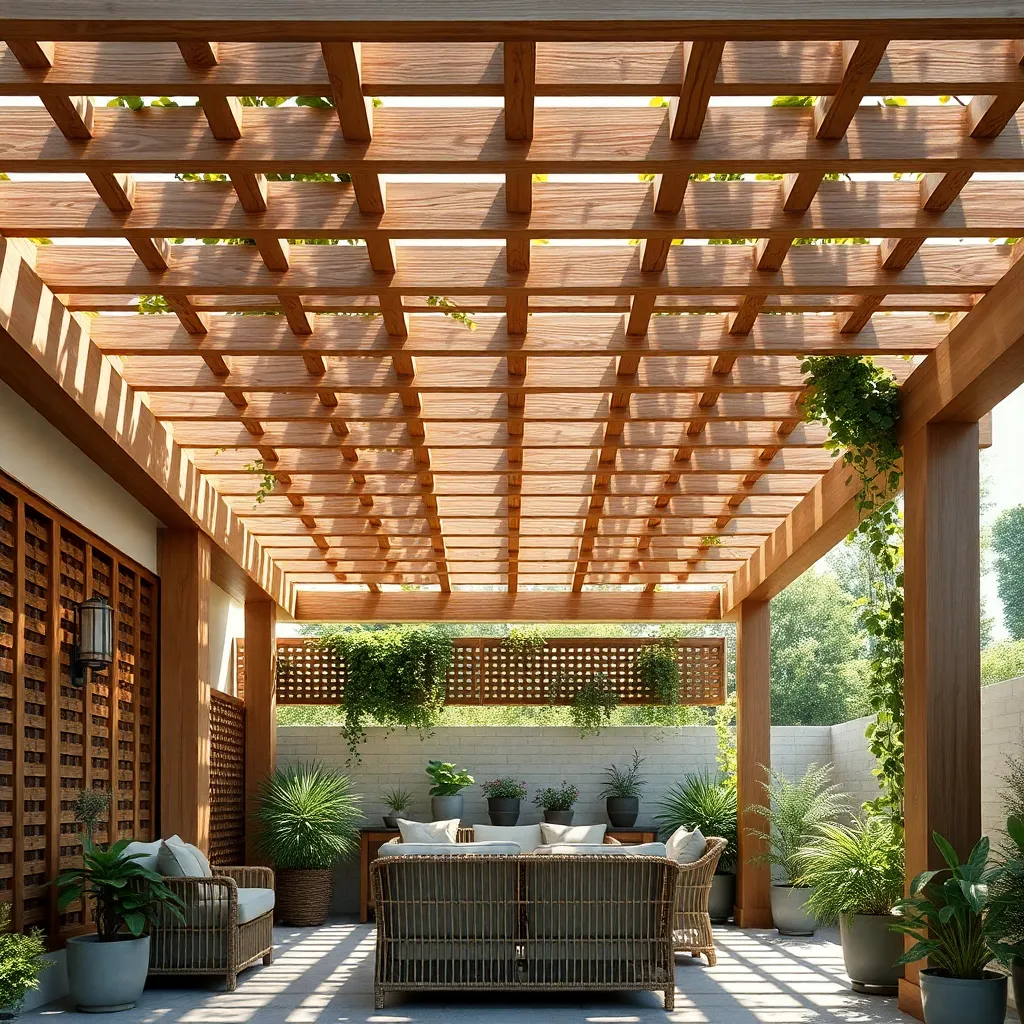
Maximize airflow in your outdoor shelter by incorporating natural ventilation openings such as adjustable louvers, screened vents, or strategically placed gaps near the roofline. Use durable materials like cedar or recycled aluminum for louvers to ensure longevity, and aim for openings about 12 to 18 inches high and wide to promote effective cross-ventilation without compromising shelter stability. Position vents on opposite walls or near the eaves and floor to encourage cool air intake and warm air exhaust, reducing the need for mechanical cooling.
For advanced ventilation, consider adding operable skylight vents or vented ridge caps that allow hot air to escape naturally at the highest point of your shelter. This not only improves airflow but also helps prevent moisture buildup, protecting your structure and contents. Remember to seal openings with fine mesh screens to keep insects out while maintaining fresh air circulation—an essential step for comfortable, eco-friendly outdoor living spaces.
Apply Non-Toxic, Eco-Friendly Paints
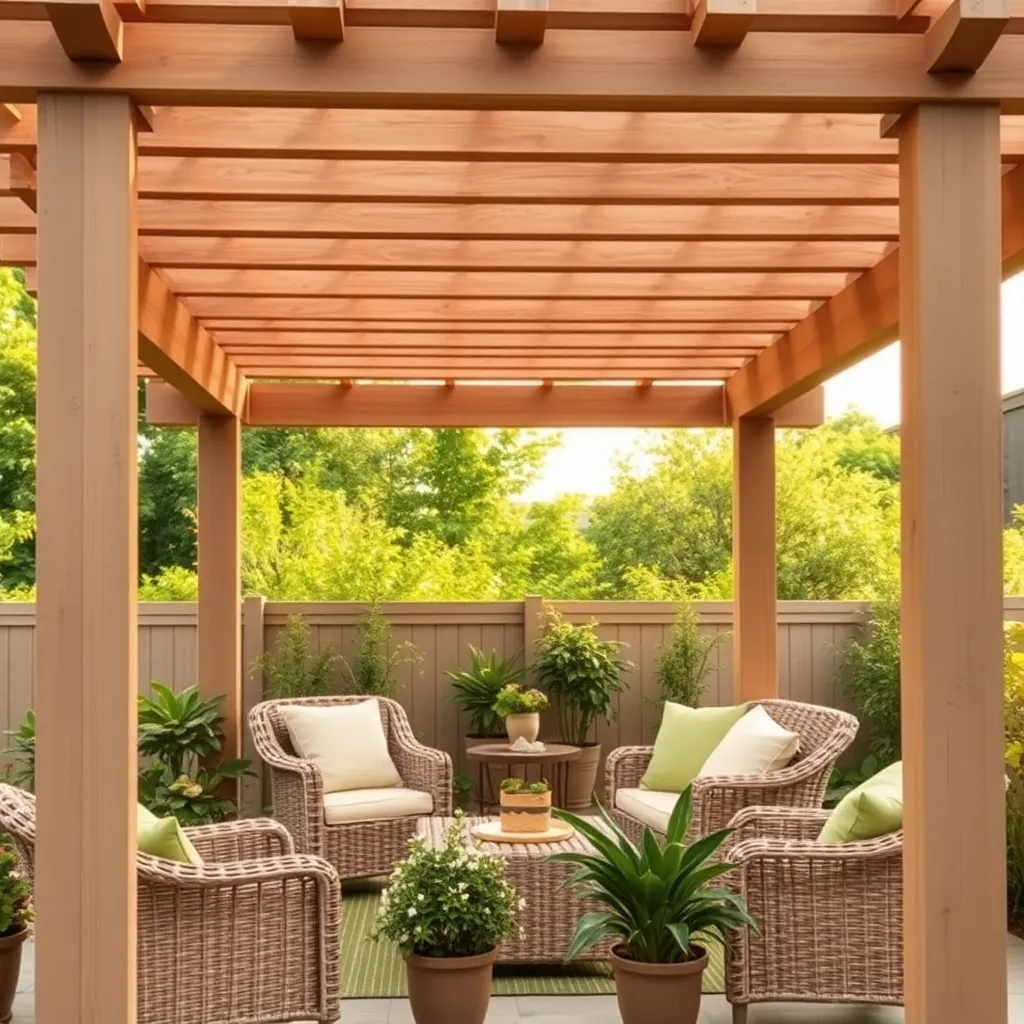
Choosing non-toxic, eco-friendly paints for your outdoor shelter protects both your family and the environment. Look for paints labeled low-VOC or zero-VOC, which emit fewer harmful chemicals, and consider natural options like clay or milk-based paints for a truly sustainable finish. Applying two thin coats with a high-quality brush or sprayer ensures even coverage and durability against weather.
For advanced protection, seal the painted surface with a water-based, non-toxic clear coat that adds weather resistance without compromising eco-friendliness. When repainting, lightly sand the surface to enhance adhesion and always paint during mild, dry weather to maximize drying time and paint longevity.
Utilize Permeable Paving Underneath
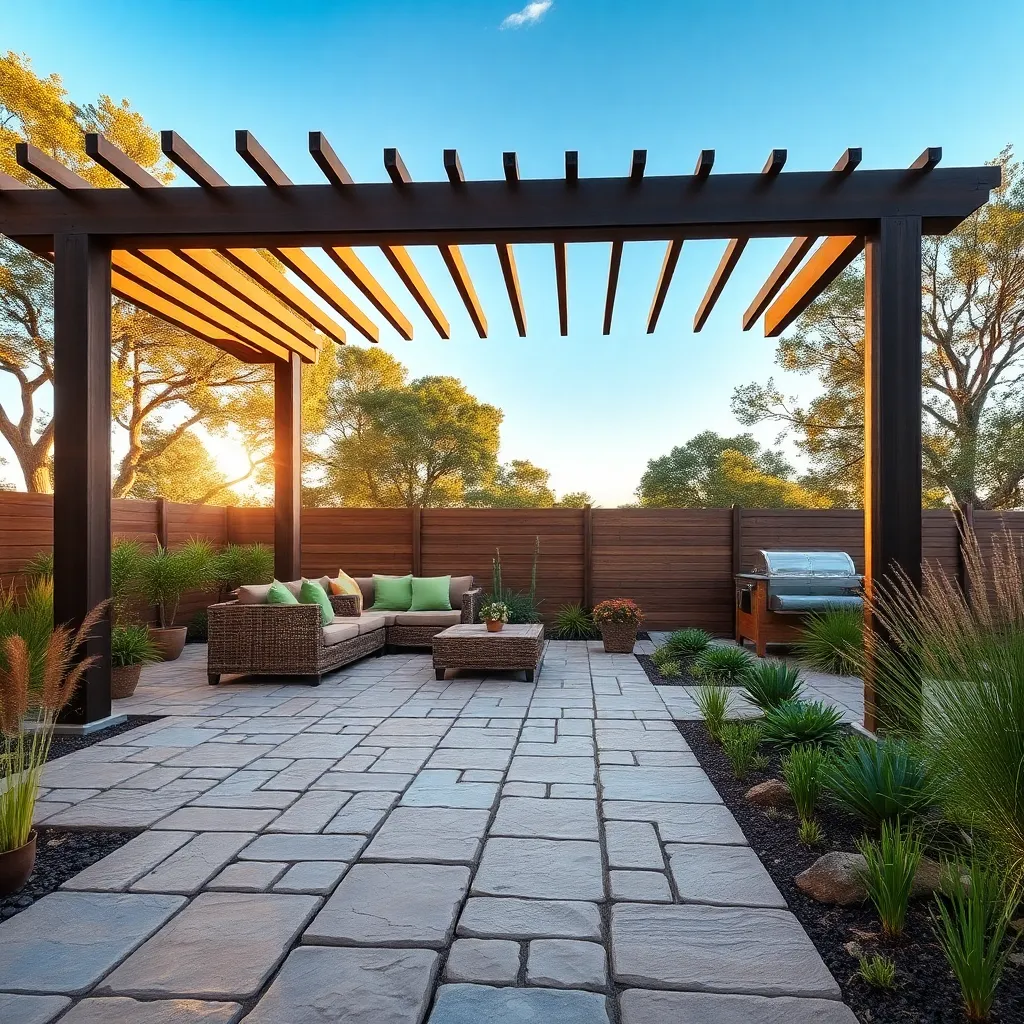
Incorporating permeable paving beneath your outdoor shelter is a smart way to manage rainwater naturally while reducing runoff and erosion. Choose materials like permeable concrete, porous pavers, or gravel combined with a geotextile fabric base; these allow water to filter through easily, supporting groundwater recharge and preventing puddles. For best results, ensure the paved area extends slightly beyond the shelter’s footprint, typically by 1-2 feet, to capture and disperse water effectively.
For a more advanced approach, integrate permeable paving with a slight slope (about 1-2%) away from the shelter to guide excess water toward garden beds or rain gardens. This not only protects your shelter’s foundation but also enhances your yard’s sustainability by creating natural irrigation zones. Regularly check and clean the surface to maintain permeability, especially if you use gravel or modular pavers, ensuring your eco-friendly shelter stays dry and functional year-round.
Integrate Native Plant Shade Screens
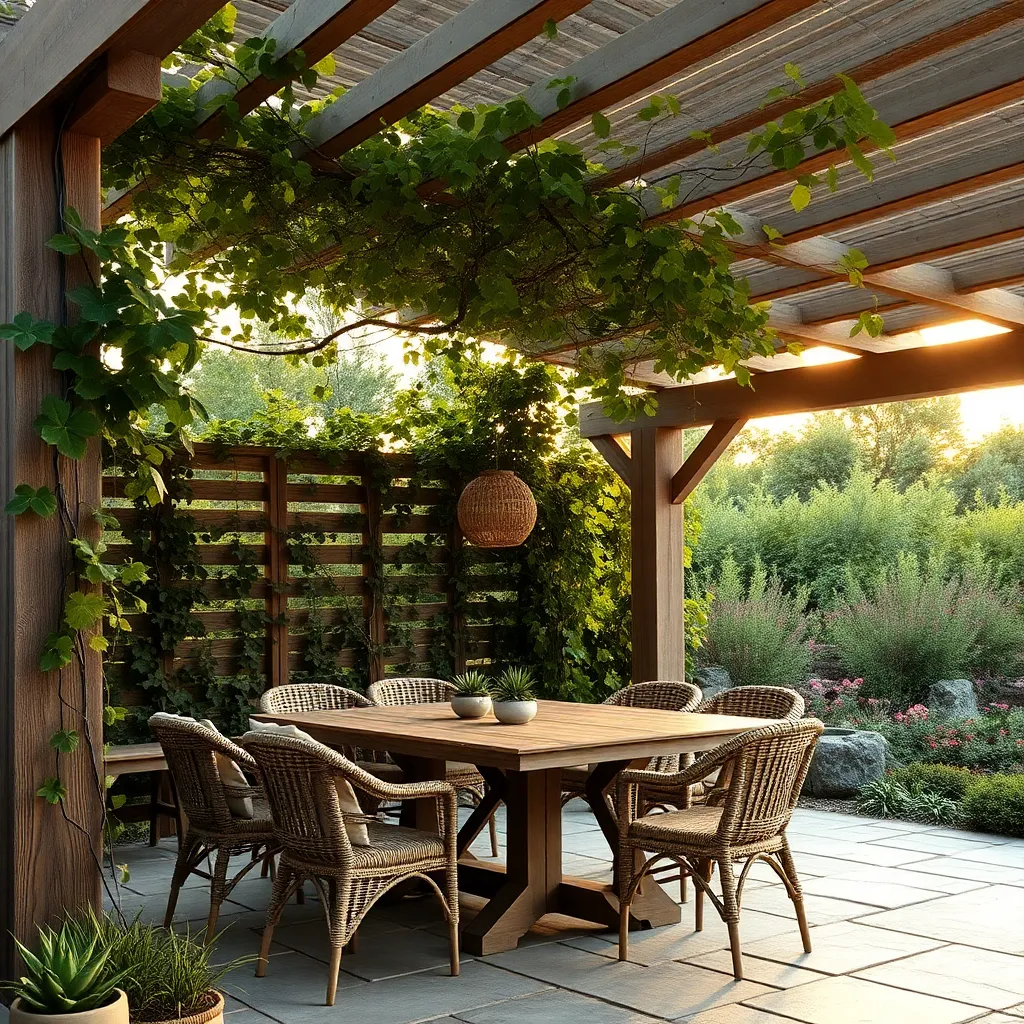
Incorporate native plant shade screens around your outdoor shelter to create natural barriers that provide cooling shade and enhance privacy. Choose fast-growing, dense shrubs or climbing vines like honeysuckle, clematis, or native lilacs, and install sturdy trellises or wooden frames about 6 to 8 feet tall for vertical growth. This living screen not only reduces heat but also supports local wildlife and requires minimal maintenance once established.
For best results, plant in well-draining soil and space your plants according to their mature width—typically 2 to 4 feet apart—to ensure full coverage without overcrowding. Advanced gardeners can combine evergreen and deciduous varieties to maintain year-round screening while optimizing sunlight in winter. Adding mulch and drip irrigation will help your shade screen thrive sustainably with less water waste.
Construct Modular, Reusable Panels
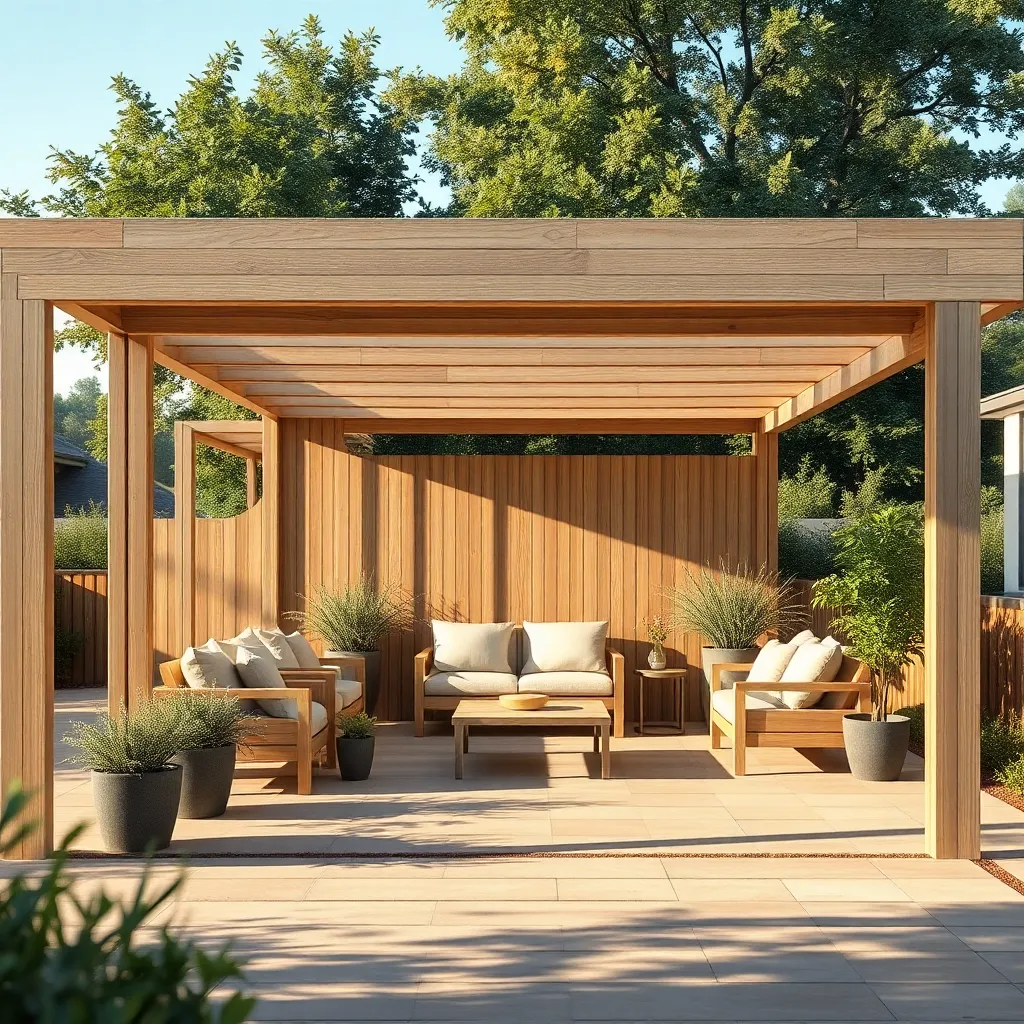
Modular, reusable panels are an excellent way to create a versatile outdoor shelter that can be easily customized and expanded. Start with durable, sustainable materials like reclaimed wood or recycled composite panels, cut into uniform sizes such as 2×4 or 2×6 feet for easy handling. Incorporate simple connection systems like metal brackets or sliding tracks to allow quick assembly and disassembly without specialized tools.
For advanced functionality, consider adding removable insulation panels or interchangeable fabric inserts to adapt the shelter for different weather conditions. To maximize eco-friendliness, seal the panels with low-VOC, weather-resistant finishes and design them to fit standard framing dimensions, enabling future upgrades or repairs with minimal waste. This approach not only supports sustainability but also lets you tailor your outdoor space over time with ease.
Conclusion: Creating Beautiful Outdoor Spaces
Creating a nurturing, eco-friendly outdoor shelter is more than just a design choice—it’s an opportunity to deepen your connection with nature and loved ones. From cozy pergolas and charming garden arches to sustainable bamboo canopies and reclaimed wood gazebos, each of the 10 shelter ideas we explored offers a unique way to enhance your yard while honoring the planet. These spaces invite shared moments of relaxation, conversation, and joy, strengthening your relationships in a natural, meaningful setting.
Ready to take the next step? Start by selecting one shelter idea that resonates with your style and values, then sketch out a simple plan or gather inspiration photos. Even small steps toward creating an eco-friendly space can spark big changes in how you connect with those around you.
Be sure to bookmark this article now—having these sustainable outdoor shelter ideas on hand will inspire you whenever you’re ready to transform your yard and your relationships. By embracing environmentally conscious spaces, you’re planting the seeds for lasting relationship success that grows stronger with every shared moment outdoors. Your journey to a greener, more connected life starts today!

